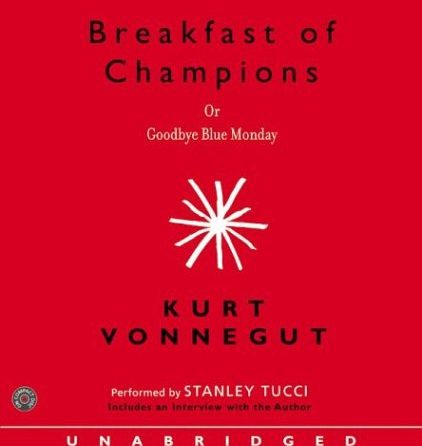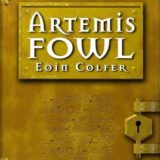
It seems like forever since that review hardcover of F. Paul Wilson’s Healer from Doubleday landed in my mailbox, but it’s only been something like 40 years (exactly). Now labeled as “A Novel of the LaNague Federation,” it was his first book, and little did I know what that would blossom into. (In the mid-to-late ’70s, I used to receive big boxes of books for review from Doubleday — hardcovers — and a mixed lot from Berkley Books. What joy that was for both me and my co-editor, the late Jon Gustafson, as we split them 50/50! [We split the contents of the boxes, not the books themselves.])
Anyway, Healer was a science fiction novel in a not-very-preposessing cover (Figure 2), but I read it anyway—and enjoyed it. A lot. It concerned a man who entered (unwittingly and unwillingly) into a symbiotic relationship with an alien organism, and what followed from that (I might review this at a later date, so I’ll say little about it —t he book cover, however, gives a clue). Anyway, this book marked him as a writer to watch out for. In the last 40 years, Paul has been busy, busy…he’s been writing a “secret history” of the world — all those things we have been kept from learning by those who control us, so to speak. If you still don’t know who F. Paul Wilson is, perhaps you’ve seen a 1983 movie based — and pretty well done, too — on one of his books: The Keep, starring Scott Glenn.

Anyway, like Robert A. Heinlein’s “Future History,” all — I think — of Paul’s books fit into this secret history of the world; the books are more or less separated into things like The Adversary Cycle—with The Keep, The Tomb, and several other books; The LaNague Federation — with Healer, An Enemy of the State and several others; as well as the Repairman Jack books (which kind of vaguely fit into several “cycles”), starring the character “Repairman Jack,” who’s sort of like The Equalizer. To continue, Paul has started a new series, it seems, with two new characters — who will somehow, I’m sure, fit in with the existing books. And the new series begins with Panacea.
What’s a panacea, you ask? Well, it’s a Latinized Greek word that means, basically, cure-all. (From “pan,” meaning “all,” and “kios,” meaning “remedy,” we get “panakeia”— which turns into “panacea”; simple, right? Well, you did ask….) A panacea, if one were to exist — which is medically impossible — would be something that would cure any disease or injury no matter what the source or cause. But suppose, just suppose, one did exist? How would that affect civilization? Hey, like the Red Queen, I can believe six impossible things before breakfast! (Well, as long as they bring forth a good story, that is….)
In Healer, we’re introduced to Medical Examiner Laura Fanning. She likes her patients, because a) they never talk back, because they’re dead, and b) they always give up their secrets… until her two newest, who simply don’t. Both patients were found under circumstances that suggest they were running illegal pot farms: the first one — a charred corpse — was taken from a building that had burned, but had trays and lights (all burned too); the second one had been found dead but taken out of the double-wide trailer that was burning. And both men had similar tattoos on their backs; something that looked like a single-snake caduceus sans wings but with an overarching comet symbol; a tattoo unlike any gang sign seen in that part of Long Island. The issues here are twofold: one, even after a comprehensive autopsy, there is no sign of what killed the two men — they were both dead before the “plant farms” burned; and two, the accelerant that caused the complete destruction of both buildings left no trace, unlike normal accelerants. The second part of the novel was a mystery that concerned the Suffolk County Sheriff’s Department, and not Laura; but as the M.E., she was supposed to determine cause of death — her boss, the Chief Medical Examiner, insisted on it, and was now calling her qualifications as an M.E. into question — but she was unable to do so!

Laura is divorced; and her eight-year-old daughter Marissa is recovering from a stem-cell transplant to cure her leukemia, which meant she had to stay at home in as sterile an environment as Laura could conceive. For a year, Marissa would be unable to go out with her friends, to a movie, and so on, because stem-cell transplant recipients are especially vulnerable to viral infections. Laura and her ex-husband were even doing a non-traditional visitation — instead of sending the child between parents, the parents were doing the visiting so that Marissa might have as stable a living space as possible, with a visiting nurse to provide home care. Into this mix come the men, though Laura doesn’t yet know it, who are causing the mysterious deaths; not killing them, but causing them to stop their own hearts in order to avoid questioning under torture. (Laura is unaware that this is happening and wouldn’t believe it was possible had she known; she is an atheist, a complete skeptic, who believes that science has ruled out certain things as being impossible.)
These men who are causing these deaths are part of a religious cult that has flourished on several continents for centuries — the 536 cult — although this particular group is actually (unknown to their employers, the U.S. Government) part of the CIA. The plants that are being grown are part of something that is believed to be impossible — a guaranteed cure-all for everything, a panacea. The 536 are a fundamentalist underground cult that thinks God has ordained that man should suffer on Earth (due to a certain interpretation of the Bible) and that the panacea exists and is a Satanist trap for mankind that must be destroyed! Against the 536 cult are the so-called “panaceans,” an underground quasi-religious group who believe in the “All-Mother,” a mystical Earth-figure that decides who should be given this mystical cure-all.
Into this mix comes a billionaire who is dying of an incurable disease and thinks that Laura is uniquely qualified to find this panacea, whether she believes it exists or not, and is prepared to pay her millions of dollars just to try, even if she doesn’t succeed! (Laura knows this kind of money can secure her daughter’s future, and is convinced to try for that reason.) The billionaire, Clayton Stahlman, wants Laura to try to follow up on a “miracle” curandero, or healer, in the jungles of Quintana Roo on the Yucutan Peninsula; he gives her his “Navy Seal” minder, Rick Hayden, to keep her safe. Laura is uniquely qualified because she is half-Mayan — the Mayans were the original inhabitants of the Yucutan Peninsula — and the curandero is also a Mayan whom Laura already knows. (Laura spent some time on the Pensinula looking for botanicals some years previous to becoming an M.E.)
So here are the key players in this book: Laura Fanning, searching for a miracle cure she believes cannot exist; Nelson Fife, CIA agent and secret member of the 536 Brotherhood, trying to destroy Laura and the so-called “panaceans”; Clayton Stahlman, billionaire who is dying and needs this mythical panacea to live; and Rick Hayden, ex-Navy Seal — or is he? — who is there only to protect Laura and ensure she brings home the bacon, but who hides a secret of his own. This book takes you from Long Island to Quintana Roo to France and other places at a pace that makes Michael Crichton look like he’s standing still; some of the action and the philosophical underpinnings are reminiscent of, say, Dan Brown. The book is a fast, enjoyable read that simply doesn’t stand still or bore at any turn. I give it an enthusiastic thumbs-up, and hope to read further adventures in this series soon!
Publisher: Tor Books (July 5 2016)
ISBN-10: 0765385163
ISBN-13: 978-0765385161
You should be able to buy this now from your local independent bookstore, or from the usual chains. Full disclosure: this was a review ARC (Advance Reading Copy) from my local TOR agent. No consideration was offered or asked in exchange.
Please comment on this week’s column if you have anything at all to say about it. You can comment here (once you’ve logged in); or you can comment on my Facebook page, or in the Facebook groups where I publish a link to this column. I welcome all comments, good or bad. Don’t feel you have to agree with me to post a comment, either. As always, my opinion is my own, and doesn’t necessarily reflect the views of Amazing Stories or its owners, editors, publishers or other columnists. See you next week!










